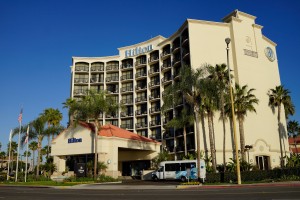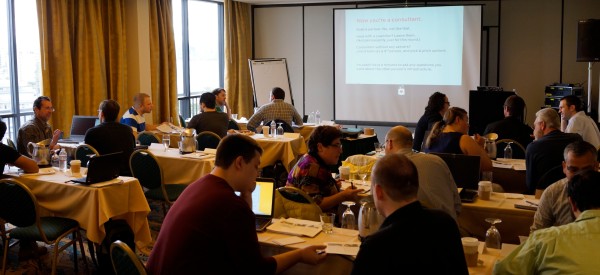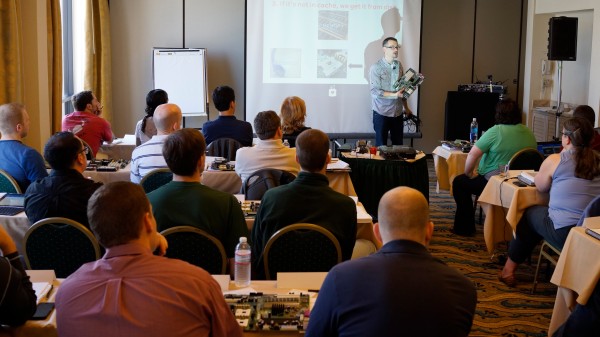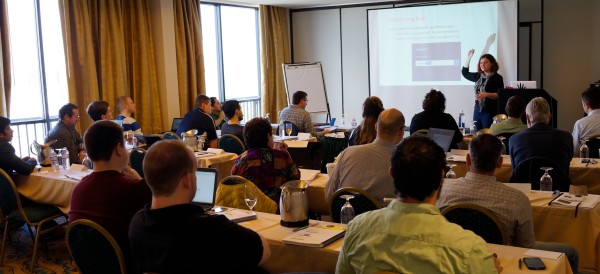We had a lot of fun this month teaching SQL Server classes at the San Diego Harbor Hilton. (We wrote about how we picked the cities earlier.) Even when we teach, we learn, and then we share what we learned, so here we are.

We like to try new things with our products and services, and this year’s classes brought a few firsts for us. Let’s recap what’s new and how it worked.
We tried new class titles and module groupings. This year, we’re running a 2-day class on How to Be a Senior DBA and a 3-day class on SQL Server Performance Troubleshooting. We wanted to find out if we’d gotten the module mixes right.
To learn, we surveyed the bejeezus out of the attendees at the start. How did they rate their skills at each module before we started, and which modules were they looking forward to the most? Then at lunchtime and end-of-day, we gave them more surveys to find out if they would recommend each module to others.
We learned right from the first day – it was obvious from the looking-forward-to question that the attendees weren’t interested in one particular module, so we gave them the option to switch it out for another module instead. That went really well, and we’ll adapt the Chicago and Philadelphia itineraries to include that change by default.

We added a lot of attendee interaction. One of the best ways to learn something is to teach it to someone else. In the high availability architecture module, we ran a 5-minute portion where you had to describe your app’s RPO/RTO needs to the person sitting next to you, and they had to recommend the right HA/DR infrastructure.
Great side effect: this got the attendees out of their shell right from the start! Before the very first bio break, each attendee knew at least one other person’s SQL Server challenges and felt comfortable talking about it.

We added optional after-hours group lab exercises. For example, on the first night of the How to Be a Senior DBA class, we broke attendees up into teams and handed them a production outage to fix. We watched via the projector as each team worked on their servers.
After the outage finished, the team conducted a post-mortem meeting just as they would (maybe?) in real-life, explaining what caused the outage, how they fixed it, and how they would ensure it didn’t happen again. Prizes went to the best solvers and best explainers.

We used attendee questions to improve the training. While the training takes place, one of us sits in the back of the room and transcribes every attendee question.
Now that the training is over, we’ll revisit the slides and demos to see where we can build those answers right into the training to keep making each delivery better. (We do this at our conference sessions, user group sessions, and webcasts too.)
Granted, we can’t just add material like crazy – otherwise we’d run way long every day – but sometimes it makes sense to take out portions of training material that isn’t working well, add in other portions, or reorder slides to introduce answers in a way that makes more sense for attendees. We have some slide decks we’ve been working on for several years, and gradually improving this way the whole time.

We added hands-on hardware for illustration. One of my favorite teaching icons says that if you want to teach students an abstract topic, give them something to put their hands on. I brought motherboards, memory, hard drives, and cables in to teach about how wait stats work, and as various queries ran onscreen, we talked about the physical holdup.
This class was the first time I’d tried this approach in person, and this is a great example of a session I’ll need to tweak over time. The time budgeting failed miserably – I didn’t get to go as deep as I wanted because I tried to cover too many things in too short of time. Now the fun part starts – I get to revisit the presentation, the attendee questions, and the subject matter, and figure out how I can impart maximum learning in 60 minutes.

We added prerequisite training videos and resources. To make sure everybody was on the same page when class started, each attendee got homework when they enrolled. They got a login for our training video system that gave them access to a group of videos we picked just for them.
When the in-person class started, their training login suddenly had access to all of the scripts and resources for the class, too. We use that same delivery system to handle all of our resources, and we love how it works.
We even extended it based on what we learned in the first class. One of the Senior DBA students suggested that we compile a list of learning resources mentioned during the class, build a PDF of the links, and add that PDF to the training site, too. Great idea! Plus, since we’ll be teaching these same classes in Chicago and Philadelphia later this year, we can even start with that same resource list because many of them will be applicable.

See, we learn a lot even when we’re teaching. We have such a great time with this, and we can’t wait to keep sharing what we learn. If it sounds like fun, join us in Chicago or Philly later this year.


2 Comments. Leave new
Hello…I’m a DBA living and working in the NYC area. My specialty is performance tuning. I have written a monitoring system utilizing DMOs. Since I can add and change code instantly, I’ve been very successful with diagnosing all areas of problems.
If you find an interest, I would love to show case the monitoring system and demo how adaptable
and unique the tool is .
Thank you for your time
Anthony Pedone
Hi Anthony,
That’s great that you’ve written the code. Have you considered presenting at a local user group and sharing it with the community that way? You have local groups, and there are also virtual groups you can present at. Check out: http://www.sqlpass.org/passchapters.aspx
Kendra